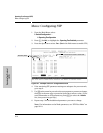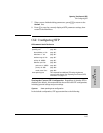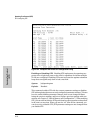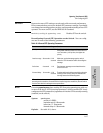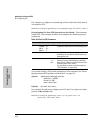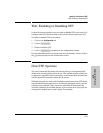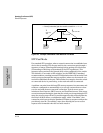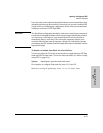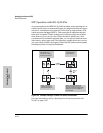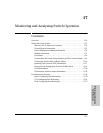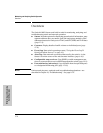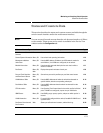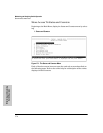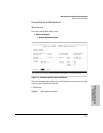
16-12
Spanning Tree Protocol (STP)
How STP Operates
Spanning Tree Protocol
(STP)
STP Operation with 802.1Q VLANs
As recommended in the IEEE 802.1Q VLAN standard, when spanning tree is
enabled on the switch, a single spanning tree is configured for all ports across
the switch, including those in separate VLANs (that is, single-instance STP,
which generates untagged BPDUs). This means that if redundant physical
links exist in separate VLANs, spanning tree will block all but one of those
links. However, if you need to use STP on the Switch 4108GL in a VLAN
environment with redundant physical links, you can prevent blocked redun-
dant links by using a port trunk. The following example shows how you can
use a port trunk with 802.1Q (tagged) VLANs and STP without unnecessarily
blocking any links or losing any bandwidth.
Figure 16-4. Example of Using a Trunked Link with STP and VLANs
For more information, refer to “Spanning Tree Protocol Operation with
VLANs” on page 14-27.
Problem:
STP enabled with 2
separate (non-trunked)
links blocks a VLAN link.
Solution:
STP enabled with
one trunked link.
Nodes 1 and 2 cannot
communicate because
STP is blocking the link.
Nodes 1 and 2 can communicate
because STP sees the trunk as a
single link and 802.1Q (tagged) VLANs
enable the use of one (trunked) link
for both VLANs.



